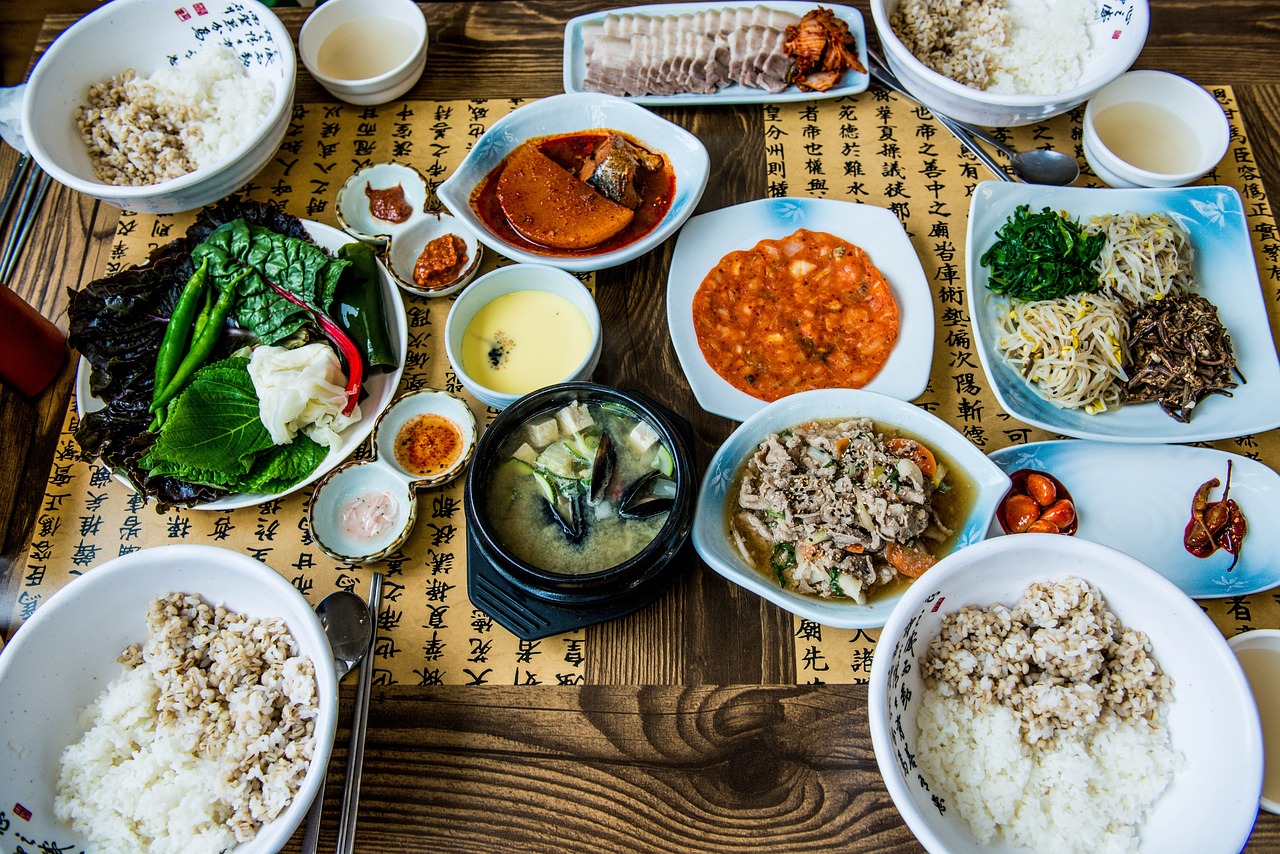The Causes of the Korean War - A Comprehensive Analysis
Understanding the causes of the Korean War requires a deep dive into the intricate web of historical events, ideological clashes, foreign interventions, and the geopolitical landscape of post-World War II Korea. The outbreak of this devastating conflict in 1950 was not a sudden occurrence but rather a culmination of simmering tensions and unresolved issues that had plagued the Korean peninsula for decades.
One of the fundamental factors that set the stage for the Korean War was the historical background of Korea, marked by a tumultuous history of occupation and division. The Japanese colonization of Korea and the subsequent division of the country at the 38th parallel by the Allies post-World War II created deep-rooted animosities between the communist North and the capitalist South, laying the foundation for future conflicts.
Moreover, the ideological differences between North Korea's communist regime under Kim Il-sung and South Korea's capitalist government fueled the flames of discord. The contrasting political systems not only led to ideological conflicts but also fostered aspirations for reunification, driving both sides towards a collision course.
Foreign involvement further complicated the situation, with major powers like the United States, Soviet Union, and China exerting their influence in the region. The strategic interests of these external actors not only shaped the dynamics of the Korean conflict but also exacerbated tensions on the peninsula, turning Korea into a battleground for Cold War rivalries.
The military buildup and arms race between North and South Korea escalated tensions to a breaking point. Both sides engaged in massive military preparations, creating a volatile environment where any spark could ignite a full-blown war. Border incidents and skirmishes only heightened hostilities, pushing the two Koreas closer to the brink of conflict.
Despite attempts at diplomacy, the failure to find a peaceful resolution and the breakdown of negotiations eventually led to the outbreak of war. Missed opportunities for dialogue and compromise paved the way for a devastating conflict that would have far-reaching implications not only for Korea but for the global geopolitical landscape.
Tracing the sequence of events that led to the sudden eruption of the Korean War in 1950 reveals a complex tapestry of historical grievances, ideological clashes, foreign interventions, and military buildups that ultimately culminated in a conflict with catastrophic consequences.

Historical Background
Exploring the complex factors that led to the outbreak of the Korean War, including historical tensions, ideological differences, the role of foreign powers, and the division of Korea post-World War II.
Amidst the lush landscapes and vibrant culture of Korea lies a history marred by occupation, colonization, and division. The roots of animosity between North and South Korea run deep, tracing back to a tumultuous past of external dominance and internal strife. The Korean people have endured the heavy hand of foreign powers and the scars of a nation torn asunder.

Ideological Differences
When delving into the causes of the Korean War, one cannot ignore the profound that existed between North and South Korea. These differences were not merely political but deeply ingrained in the core beliefs and systems of governance of each nation. On one side, there was North Korea, embracing communism as its guiding ideology, while on the other side, South Korea stood firm in its adherence to capitalism.
The clash between communism and capitalism was not just a theoretical debate but a stark reality that fueled the aspirations for reunification on both sides of the border. North Korea's communist regime led by Kim Il-sung sought to spread its ideology and influence, viewing the capitalist South as a barrier to the unification of the Korean peninsula under communist rule. Conversely, South Korea's capitalist system, supported by the United States, aimed to uphold democracy and thwart the spread of communism in the region.
This ideological tug-of-war created a volatile atmosphere where the quest for reunification was entangled with the broader geopolitical rivalry between the Soviet Union and the United States. The Korean peninsula became a battleground not only for conflicting ideologies but also for the strategic interests of superpowers vying for dominance in the post-World War II era.
The ideological differences between North and South Korea were not just abstract concepts but manifested in concrete policies and actions that shaped the course of Korean history. The fervent belief in their respective systems drove both sides to pursue their goals relentlessly, setting the stage for a confrontation that would erupt into a full-scale war with devastating consequences.

Foreign Involvement
Foreign involvement played a crucial role in shaping the dynamics of the Korean War, with major powers like the United States, Soviet Union, and China exerting significant influence on the conflict. The division of Korea post-World War II into two separate entities, North and South Korea, set the stage for external interference and manipulation. The United States supported South Korea, viewing it as a strategic ally in the containment of communism, while the Soviet Union and China backed North Korea, seeking to expand their sphere of influence in the region.
The involvement of these foreign powers not only fueled the ideological tensions between communism and capitalism but also escalated the military buildup on both sides. The United States provided military aid and training to South Korea, enhancing its defensive capabilities and bolstering its position against the communist threat. On the other hand, the Soviet Union and China supplied arms and resources to North Korea, further intensifying the arms race and increasing the likelihood of a full-scale conflict.
Moreover, the geopolitical interests of the major powers in the Korean Peninsula added another layer of complexity to the situation. The United States aimed to prevent the spread of communism in East Asia, while the Soviet Union and China sought to challenge American influence in the region. This geopolitical rivalry exacerbated the existing tensions between North and South Korea, turning the Korean Peninsula into a battleground for the broader ideological and strategic competition between the superpowers.
As a result, foreign involvement in the Korean War not only prolonged the conflict but also heightened its destructive impact on the Korean people and the region as a whole. The intervention of external powers transformed a local dispute into an international crisis, with far-reaching consequences that continue to shape the geopolitics of East Asia to this day.

The Division of Korea
The division of Korea at the 38th parallel after World War II by the Allies had profound implications for the Korean peninsula. This division, primarily between North Korea and South Korea, created a stark contrast in political ideologies and governance. On one side, North Korea embraced communism under the influence of the Soviet Union, while South Korea adopted capitalism with the support of the United States. This ideological divide laid the foundation for future conflicts and tensions between the two Koreas.
The division not only separated families and communities but also fueled aspirations for reunification. The demarcation line became a symbol of deep-seated animosities and territorial disputes, further exacerbated by external powers seeking to exert influence in the region. The division of Korea was not merely a physical separation but a manifestation of ideological struggles and power dynamics that would shape the course of Korean history.
As a result of the division, both North and South Korea established separate governments and pursued conflicting agendas. The North sought to unify the peninsula under its communist regime, viewing the division as a temporary setback in achieving its ultimate goal. Meanwhile, South Korea aimed to strengthen its democratic institutions and align itself with Western powers to resist the spread of communism in the region.
The division of Korea also led to the militarization of the peninsula, with both North and South Korea engaging in military buildups and preparations for potential conflict. The presence of foreign troops and the establishment of military alliances further heightened tensions and created a volatile environment where any incident could spark a larger confrontation.
Despite efforts to negotiate reunification and ease tensions, the division of Korea remained a contentious issue with far-reaching consequences. The legacy of this division continues to shape inter-Korean relations and regional geopolitics, underscoring the complexities and challenges inherent in resolving long-standing conflicts.

Military Buildup
The leading up to the Korean War was a crucial element in the escalation of tensions between North and South Korea. Both sides engaged in an intense arms race and significant military preparations, heightening the atmosphere of conflict on the Korean Peninsula. North Korea, under the leadership of Kim Il-sung, bolstered its military capabilities with the support of the Soviet Union and China, while South Korea, backed by the United States, also significantly strengthened its armed forces.
This period saw a rapid increase in military spending and the acquisition of advanced weaponry by both North and South Korea. The militarization of the border between the two Koreas intensified, with both sides fortifying their positions and conducting large-scale military exercises. The constant display of military might by both nations served to fuel suspicions and fears, creating a volatile environment where any spark could ignite a full-blown conflict.
The military buildup was not just about amassing weapons and troops; it was also a psychological warfare tactic. Each side sought to demonstrate its readiness and willingness to engage in combat, sending a clear message to the other of their preparedness for war. The saber-rattling and shows of force were aimed at intimidating the opponent and asserting dominance, further escalating the already tense situation on the Korean Peninsula.

Border Incidents
Border incidents played a crucial role in heightening tensions on the Korean peninsula before the outbreak of the war. The demarcation line at the 38th parallel, established after World War II, became a hotspot for skirmishes and provocations between North and South Korea. These incidents often resulted in casualties and further fueled animosities between the two sides.
One notable border incident was the Battle of Ongjin, where clashes between North Korean and South Korean forces escalated into a full-scale conflict. The strategic location of Ongjin near the Yellow Sea made it a contentious area, with both sides vying for control. The battle demonstrated the volatility of the border region and the potential for conflict to spiral out of control.
Additionally, the border incidents were not limited to direct military confrontations. Subversive activities such as espionage, infiltration, and propaganda campaigns were also common along the demilitarized zone. These covert operations further destabilized the already tense situation and contributed to the atmosphere of distrust and suspicion between North and South Korea.
As tensions continued to escalate through a series of border incidents, both sides became increasingly wary of each other's intentions. The constant threat of violence along the demilitarized zone created a sense of perpetual unease, with the potential for any minor provocation to ignite a larger conflict. The border incidents served as a constant reminder of the fragile peace that existed on the Korean peninsula.

Failed Diplomacy
During the tumultuous period leading up to the Korean War, diplomatic efforts to prevent conflict ultimately faltered, paving the way for the outbreak of hostilities. The failure of diplomacy can be attributed to a combination of factors, including deep-seated mistrust between the rival factions, conflicting geopolitical interests of external powers, and the inability to find common ground on key issues.
One of the primary reasons for the failed diplomacy was the entrenched ideological divide between North and South Korea. The stark contrast between communism in the North and capitalism in the South created a significant barrier to meaningful negotiations. Efforts to bridge this ideological gap through diplomatic channels often proved futile, as both sides remained steadfast in their respective beliefs and aspirations.
Additionally, the involvement of major powers such as the United States and the Soviet Union further complicated diplomatic endeavors. The Cold War rivalry between these superpowers spilled over into the Korean Peninsula, turning it into a battleground for their ideological struggle. As a result, diplomatic initiatives were often undermined by the competing interests and agendas of external actors.
The failure of diplomacy was also exacerbated by a series of missed opportunities for peaceful resolution. Despite numerous attempts to engage in dialogue and mediation, key turning points were overlooked, and opportunities for de-escalation were squandered. This lack of effective communication and compromise ultimately led to a breakdown in diplomatic relations and a descent into open conflict.
Moreover, the legacy of colonialism and the division of Korea post-World War II cast a long shadow over diplomatic efforts. The unresolved territorial disputes and historical grievances between the North and the South further hindered attempts to reach a lasting peace agreement. The failure to address these underlying issues through diplomacy laid the groundwork for the eruption of war.
In conclusion, the failure of diplomacy in the lead-up to the Korean War underscores the complexities and challenges inherent in resolving deep-rooted conflicts. Despite earnest efforts to find a peaceful solution, the inability to overcome ideological differences, navigate external influences, seize key opportunities, and address historical grievances ultimately led to a breakdown in diplomatic efforts and the tragic onset of war.

Outbreak of War
The outbreak of the Korean War in 1950 was a sudden and violent event that sent shockwaves throughout the world. The tensions that had been simmering between North and South Korea, fueled by historical animosities and ideological differences, finally reached a boiling point. The invasion of South Korea by North Korean forces on June 25, 1950, marked the beginning of a brutal conflict that would last for three years.
As the North Korean army swiftly advanced, capturing Seoul within days, the international community was caught off guard. The United Nations Security Council quickly condemned the invasion and called for a withdrawal of North Korean forces. In response, a UN coalition led by the United States intervened to support South Korea, turning the conflict into a global proxy war.
The outbreak of war not only resulted in massive loss of life and widespread destruction but also had far-reaching geopolitical consequences. The involvement of major powers such as the United States, Soviet Union, and China further complicated the conflict, turning Korea into a battleground for competing ideologies and interests.
With the outbreak of war, the Korean peninsula became a crucible of violence and suffering, with civilians bearing the brunt of the fighting. The devastating impact of the war on the Korean people, as well as the broader implications for international relations, underscored the high stakes involved in the conflict.
Frequently Asked Questions
- What were the main causes of the Korean War?
The main causes of the Korean War can be attributed to historical tensions, ideological differences, foreign involvement, the division of Korea post-World War II, military buildup, border incidents, failed diplomacy, and the outbreak of war in 1950.
- How did the division of Korea contribute to the outbreak of the Korean War?
The division of Korea at the 38th parallel by the Allies after World War II created a volatile environment with deep-rooted animosities between North and South Korea, setting the stage for future hostilities and territorial disputes that eventually led to the outbreak of the Korean War.
- What role did foreign powers play in the Korean War?
Foreign powers such as the United States, Soviet Union, and China played a significant role in shaping the Korean conflict by supporting either North or South Korea, providing military aid, and exacerbating tensions on the peninsula, ultimately contributing to the outbreak and escalation of the war.
- Why did diplomatic efforts fail to prevent the Korean War?
Diplomatic efforts failed to prevent the Korean War due to missed opportunities for peaceful resolution, breakdowns in negotiations, and the inability of conflicting parties to reach a consensus, leading to a breakdown in diplomacy and the eventual eruption of full-scale war.



















